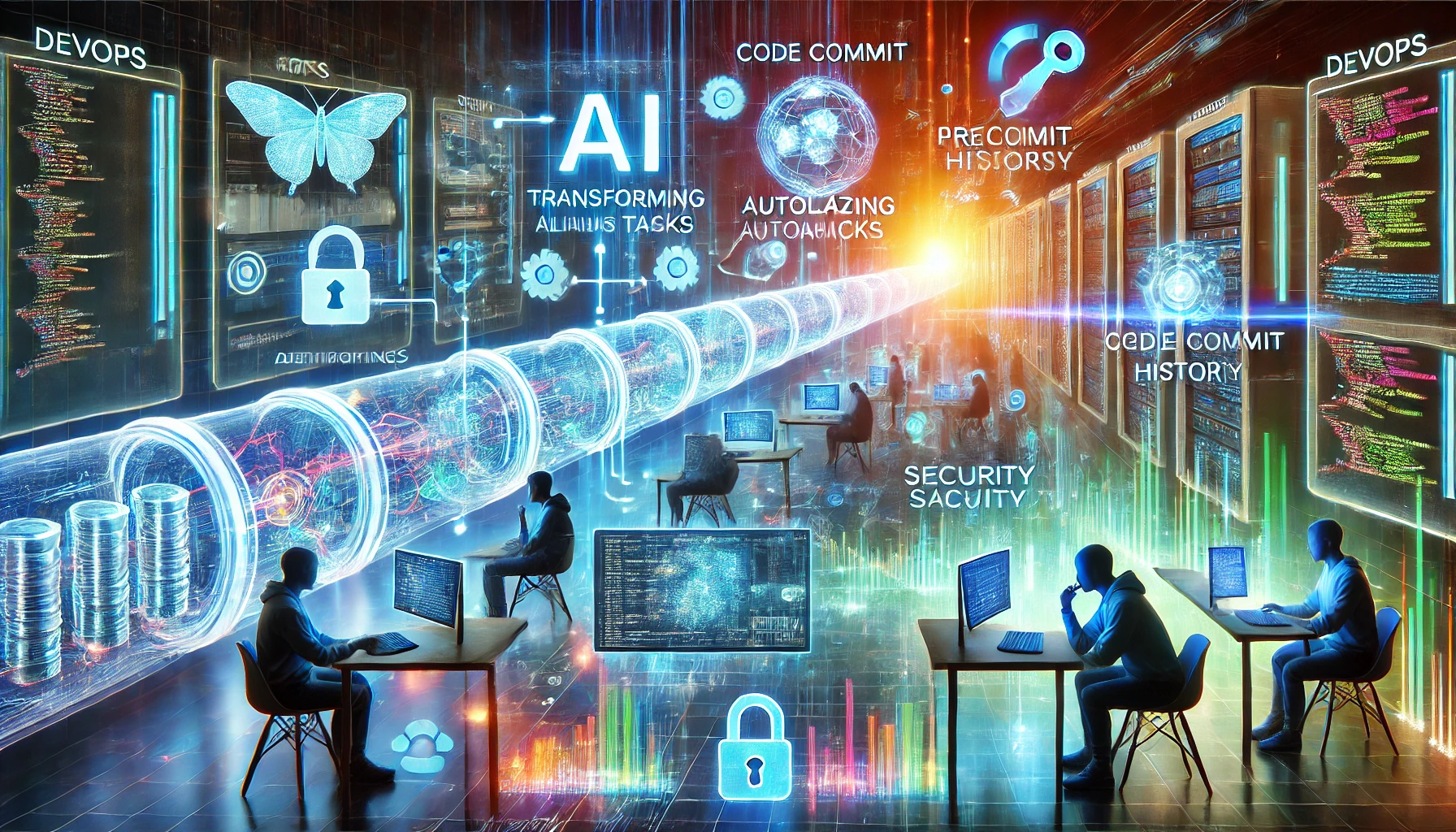DevOps Revolution: Top Trends for 2024
Unveiling the Future of Software Development and Deployment
Get ready to be amazed! The DevOps world is changing faster than ever, and 2024 is shaping up to be a year of groundbreaking innovations. Discover the top trends poised to revolutionize how we build, deploy, and manage software. Prepare to be captivated!
Rise of AI in DevOps for Predictive Insights :-
- Imagine a world where your DevOps pipeline anticipates problems before they happen. This is the promise of AI-powered predictive analysis. By analyzing vast amounts of data from your development, testing, and deployment processes, AI algorithms can identify patterns and predict potential issues, such as performance bottlenecks, security vulnerabilities, or deployment failures. This allows you to proactively address problems and prevent costly downtime.
- At ApnaGuru ,we are at the forefront of leveraging AI to revolutionize DevOps. For instance, AI can analyze code commit history to identify patterns that correlate with bugs. This information can be used to improve code quality, prevent future bugs, and reduce the time it takes to resolve issues. Furthermore, AI can predict the likelihood of a deployment failing and automatically trigger rollback procedures if necessary. This prevents disruptions to your services and keeps your users happy. The integration of AI brings a revolutionary level of automation and intelligence to DevOps, and ApnaGuru is proud to lead this transformation.
Automating Repetitive Tasks :-
- AI is not just about prediction; it's also about automation. Many DevOps tasks are repetitive and time-consuming, such as monitoring system logs, configuring servers, and running tests. At ApnaGuru, we leverage AI to automate these tasks, freeing up DevOps engineers to focus on more strategic initiatives. This includes automating processes like infrastructure provisioning, testing, deployment, and monitoring. Such automation not only enhances accuracy but also reduces human error, which is essential for maintaining reliable systems.
- Consider the scenario of automated testing. With AI-powered testing tools, ApnaGuru automates the generation of test cases, execution of tests, and analysis of results. This results in faster and more comprehensive testing cycles, ultimately improving software quality and shortening release cycles. The significant reduction in manual effort translates into substantial time savings and higher efficiency. By embracing AI for automation, ApnaGuru is setting a new benchmark in productivity and efficiency for modern DevOps practices.
Enhanced Security and Risk Management :-
- Security is paramount in the DevOps world. AI can enhance security by identifying and responding to threats in real-time. AI-powered security tools can analyze network traffic, logs, and code to detect anomalies and potential security breaches. This allows organizations to respond quickly to threats and prevent major incidents. AI can also help to improve risk management by identifying potential risks early on in the development process.
- An example of this is AI-driven vulnerability scanning. AI algorithms can analyze codebases to identify potential vulnerabilities that might be missed by traditional methods. This enables proactive remediation, reducing the attack surface. Moreover, AI can learn from past security incidents and use this knowledge to improve security practices and prevent future breaches. The integration of AI is revolutionizing DevOps security, ushering in a new era of proactive threat detection and mitigation.
Focus on GitOps and Infrastructure as Code (IaC)
Understanding GitOps :-
- GitOps is a way of managing infrastructure and applications using Git as the single source of truth. This means that all infrastructure and application configurations are stored in a Git repository, and changes are made through pull requests. This approach promotes collaboration, version control, and repeatability. It is a paradigm shift from traditional methods of infrastructure management, which often involved manual configurations and lacked a centralized version control system.
- The core principle of GitOps involves managing infrastructure and applications as code. This provides significant advantages like improved collaboration, enhanced reproducibility, efficient version control, and streamlined workflows. It allows multiple individuals to work together on infrastructure and application configurations while maintaining a central, auditable record of all changes. Imagine the ease of rollback and recovery should an error occur – a seamless process.
Benefits of IaC :-
- Infrastructure as Code (IaC) is the practice of managing and provisioning infrastructure through code instead of manual processes. This approach allows for automation, repeatability, and version control of infrastructure. IaC tools, such as Terraform and Ansible, can be used to define and manage infrastructure resources, such as servers, networks, and databases. This leads to greater efficiency and consistency in infrastructure management. It drastically reduces the potential for human error.
- The use of IaC dramatically reduces the time and effort required for infrastructure provisioning. It allows for consistent deployment across different environments, ensures compliance with organizational policies, and provides a repeatable process for infrastructure updates. Think about the speed and efficiency of deploying a new server – automated from start to finish! Furthermore, this approach allows for better collaboration and version control, crucial components in a robust DevOps environment.
Implementing GitOps and IaC :-
- Implementing GitOps and IaC requires a shift in mindset and a willingness to embrace new tools and processes. However, the benefits are significant. By using Git as a single source of truth for all infrastructure and application configurations, organizations can improve collaboration, version control, and repeatability. This can be achieved through various tools and strategies.
- The first step involves selecting appropriate IaC tools such as Terraform, Ansible, Chef, or Puppet. The choice depends on the specific needs and infrastructure of the organization. Then, establishing a well-defined Git workflow is essential, including branching strategies, pull request processes, and code review practices. Finally, continuous integration and continuous delivery (CI/CD) pipelines need to be configured to automate the deployment process. Implementing GitOps and IaC is a journey that requires careful planning, and it will positively transform your DevOps practices.
